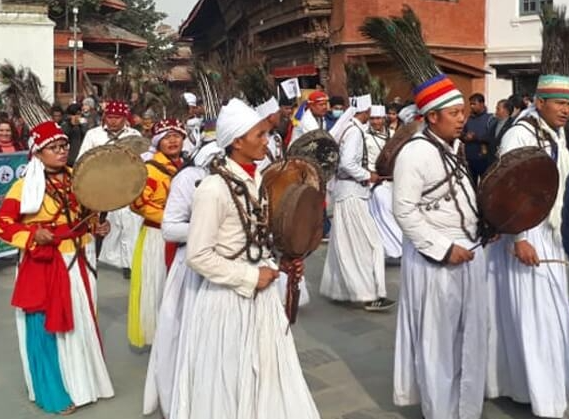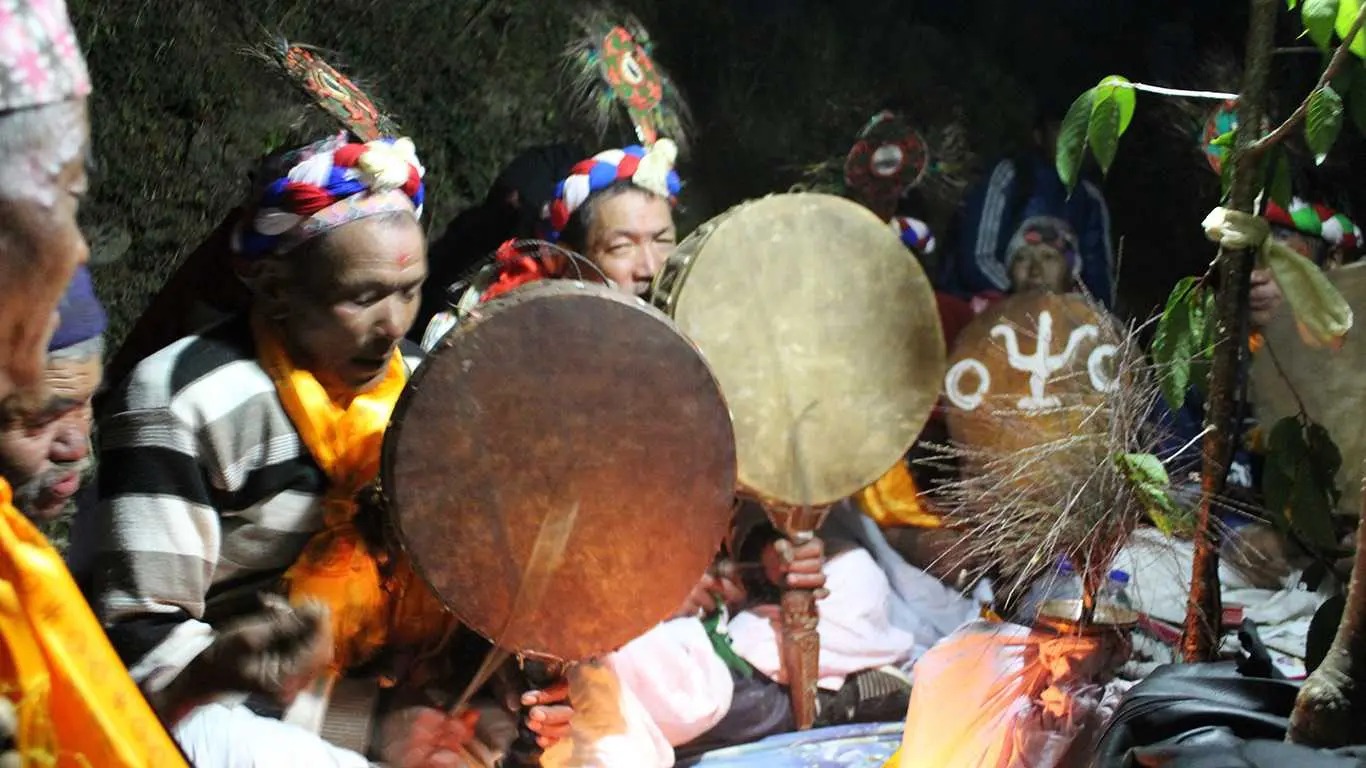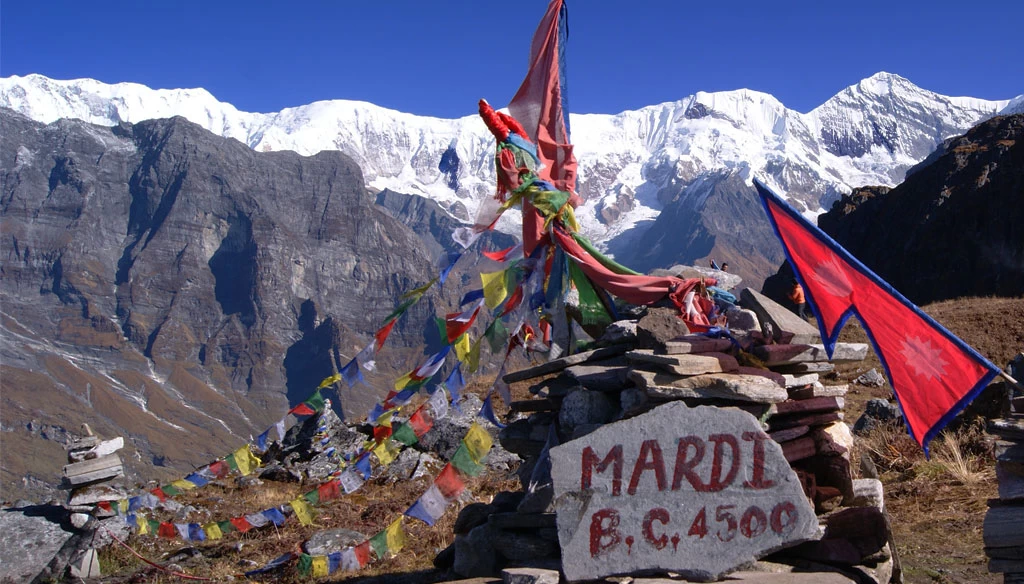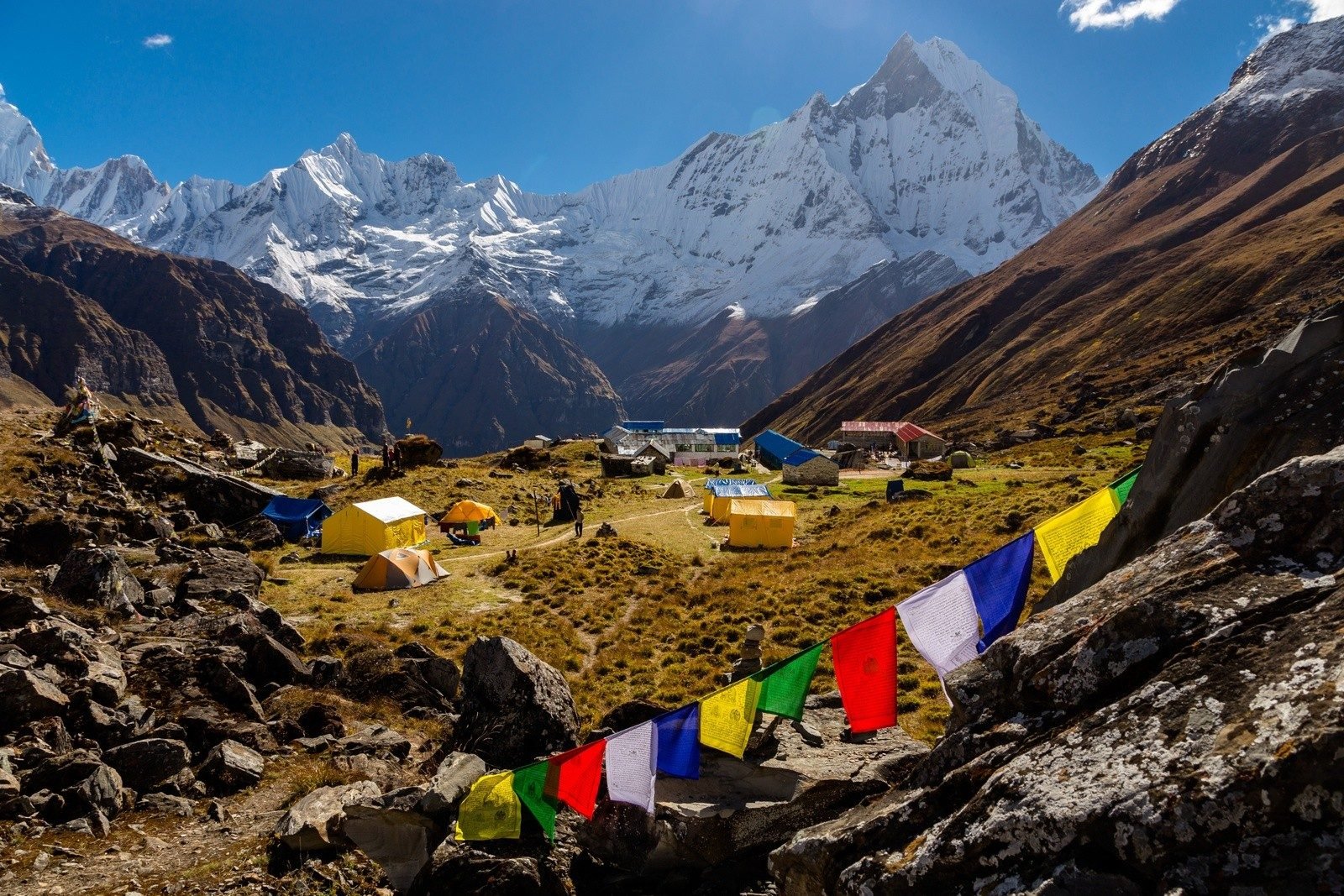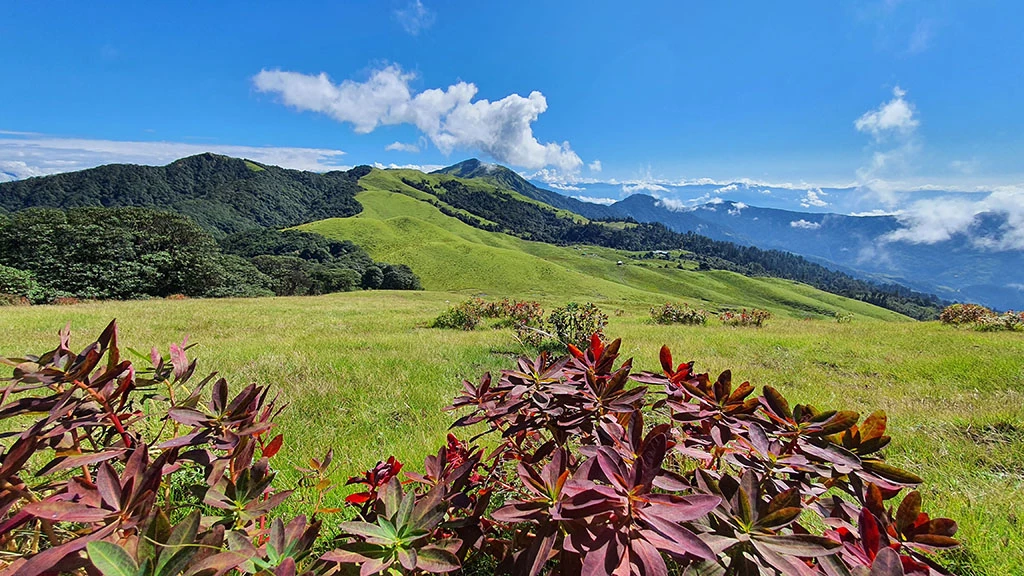
Nepal is not just a land of majestic mountains and lush green valleys; it is a repository of diverse cultures, ancient traditions, and unique trekking experiences. Among the many hidden trails of Nepal, the Mundhum Trail Trek, also known as the Kirat Culture Trail, stands out as a remarkable journey into the heart of Kirat heritage, culture, and spirituality. Spanning 11 days, this trek offers an unparalleled opportunity to explore untouched landscapes, interact with indigenous Kirat communities, and immerse oneself in rituals and traditions that have been preserved for centuries. Unlike the crowded trails of Everest or Annapurna, the Mundhum Trail provides a serene and culturally rich trekking experience, blending adventure with deep cultural insight.
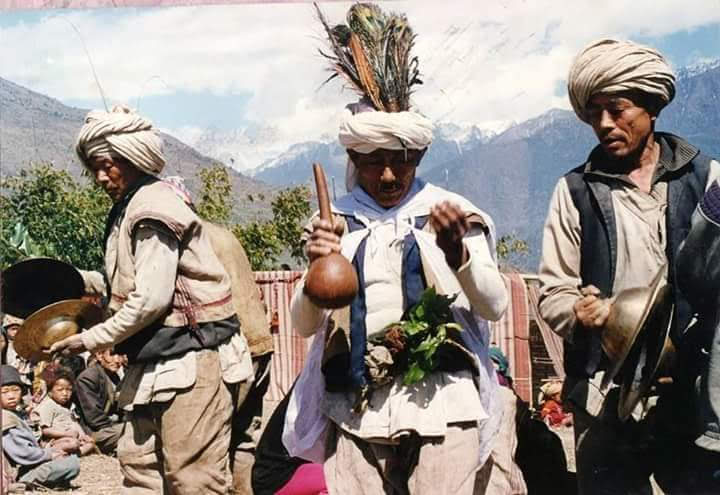
History of the Mundhum Trail
The Mundhum Trail has deep historical roots tracing back to the ancient Kirat civilization. The Kirats are one of the earliest known inhabitants of the Himalayan region, dating back thousands of years. Their culture and society are intricately connected to the spiritual texts known as Mundhum, which encompass the philosophy, folklore, rituals, and moral codes of the Kirat people. The Mundhum, transmitted orally for generations, forms the backbone of Kirat cultural identity and guides daily life, social interactions, and religious practices.
Historically, the Mundhum Trail was not just a route for trekking but also a sacred passage connecting various Kirat settlements and ritual sites. The trail allowed the Kirat shamans, known as Phedangma or Nakchhong, to travel between villages, performing rituals, passing down oral traditions, and maintaining the spiritual and cultural fabric of the community. The path also facilitated trade and interaction among different Kirat subgroups, including the Rai, Limbu, and Yakkha communities, allowing them to exchange goods, agricultural products, and cultural practices. Over centuries, this trail has become a living museum of Kirat heritage, offering trekkers both a physical adventure and a spiritual journey into Nepal’s ancient civilization.
The Kirat People and Their Culture
The Kirat people are renowned for their vibrant culture, rich folklore, and deep spiritual practices. Predominantly residing in eastern and central Nepal, the Kirats have maintained a unique identity that blends nature worship, ancestor veneration, and community rituals. The core of Kirat culture revolves around the Mundhum, which serves as both a spiritual and social guide. It contains stories of creation, moral teachings, historical events, and guidelines for rituals, festivals, and social conduct.
The Rai and Limbu communities, the primary custodians of the Mundhum tradition, are known for their distinctive attire, music, and dance forms. Women often wear colorful woven dresses with intricate patterns, while men don traditional tunics and caps. Kirat festivals such as Chasok Tangnam and Udhauli-Udhaunl are celebrated with lively dances, songs, and offerings to nature and ancestors. Throughout the trek, visitors witness the harmonious blend of daily life and spirituality in Kirat villages, where agriculture, livestock rearing, and ritual activities co-exist seamlessly.
Music and dance play a central role in Kirat society. Traditional instruments such as the Dhol, Jhyamta, and Sarangi accompany ceremonial dances that narrate historical events, folklore, or seasonal cycles. The Sakela dance is particularly famous, performed during planting and harvest festivals, symbolizing the community’s connection with nature and gratitude to the deities for a bountiful yield. Trekkers on the Mundhum Trail often have the privilege of witnessing these dances firsthand, providing an authentic insight into Kirat life and celebrations.
Spiritual Significance of the Mundhum
The Mundhum is more than a religious scripture; it is the spiritual heartbeat of the Kirat people. Divided into sections such as Thungsap, Peyang, and Samjik, the Mundhum contains cosmology, moral laws, ritual instructions, and guidance on communal life. It teaches harmony with nature, respect for ancestors, and ethical living, principles that continue to shape the daily lives of the Kirat communities along the trail.
During the trek, several sacred sites and shrines related to Mundhum rituals can be visited. Trekkers often encounter ritual altars in village centers, where shamans conduct ceremonies for prosperity, health, or purification. The trail also passes through sacred groves and ancestral burial grounds, highlighting the Kirat belief in the interconnection between humans, nature, and the spirit world. Understanding the spiritual significance of these sites enriches the trekking experience, transforming a simple journey into a pilgrimage through the living heritage of the Himalayas.
Trekking Route Overview
The Mundhum Trail Trek typically spans 11 days, beginning from a convenient access point in eastern Nepal. The trek offers a diverse mix of landscapes, from subtropical forests to alpine meadows, and passes through numerous Kirat villages. Below is a day-by-day overview of the trek:
Day 1: Arrival in Kathmandu – Trekkers arrive in Kathmandu, where they meet guides and porters, check trekking permits, and prepare for the journey. A briefing on the Kirat culture and trail history is conducted to provide cultural context.
Day 2: Kathmandu to Eastern Nepal Gateway (Drive/Flight) – Depending on the starting point, trekkers drive or fly to the trailhead. The route passes through scenic valleys, rivers, and rural settlements, providing an initial glimpse of Kirat life.
Day 3: Trailhead to First Kirat Village – The trek begins on foot, entering dense forests and gradually ascending. The first Kirat village introduces trekkers to local architecture, traditional farming practices, and Mundhum rituals observed by villagers.
Day 4: Exploring Kirat Settlements – Walking through multiple villages, trekkers witness traditional community life, visit local schools, and interact with elders. Cultural immersion is a key focus, including participation in small rituals or observing daily farming activities.
Day 5: Forests and Sacred Groves – The trail passes through sacred forests where certain trees and areas are preserved due to their spiritual significance. Guides explain local folklore and legends associated with these sites.
Day 6: Alpine Meadows and Yaks – Trekkers ascend into higher altitudes, encountering alpine meadows, grazing yaks, and panoramic views of surrounding peaks. This day highlights the connection between Kirat pastoral life and mountainous landscapes.
Day 7: Main Cultural Center of the Trail – This day is devoted to visiting a central Kirat settlement where key rituals are performed. Trekkers learn about Mundhum recitations, Sakela dances, and traditional music.
Day 8: Trek to Remote Villages – Trekking into less-frequented villages provides opportunities to engage deeply with local families, sample traditional Kirat food, and experience homestays.
Day 9: Scenic Views and Spiritual Sites – The trail includes viewpoints overlooking rivers, valleys, and distant peaks, as well as spiritual shrines dedicated to ancestors. The day combines natural beauty with cultural significance.
Day 10: Return Journey – Trekkers begin descending back toward the trailhead, reflecting on the cultural and natural experiences. Guides provide insights into the stories and history of the areas traversed.
Day 11: Departure to Kathmandu – The trek concludes with a return to Kathmandu for final debriefing, cultural discussions, and departure. Memories of the Kirat culture, rituals, and landscapes remain vivid.
Best Time to Visit
The Mundhum Trail Trek is best undertaken during spring (March to May) and autumn (September to November). These periods provide stable weather, clear skies, and comfortable temperatures, ensuring both enjoyable trekking conditions and excellent visibility of surrounding landscapes. Spring is especially rewarding as rhododendrons and wildflowers bloom along the trail, creating a colorful tapestry. Autumn offers post-monsoon clarity, making distant Himalayan peaks visible and providing a more serene trekking experience.
Winter trekking is possible but challenging due to cold temperatures and snow-covered paths at higher altitudes. Summer, particularly the monsoon months (June to August), is less ideal due to heavy rains, slippery trails, and limited visibility. However, some trekkers prefer this time for lush greenery and fewer crowds, provided they are prepared for wet conditions.
Weather and Climate
The Mundhum Trail experiences a diverse climate due to altitude variations. Lower sections near river valleys are subtropical with moderate temperatures, while higher alpine zones are colder, often dropping below freezing at night. Daytime temperatures in spring and autumn typically range between 15–22°C in lower areas and 5–10°C in higher elevations. Nights can be chilly, especially above 3,000 meters.
Rainfall is concentrated during the monsoon, leading to muddy trails and swollen rivers. Snowfall occurs occasionally in higher altitudes during winter, adding both beauty and difficulty to the trek. Trekkers are advised to carry layered clothing, waterproof gear, and appropriate footwear to navigate the varied terrain and weather conditions safely.
Flora and Fauna
The trail is rich in biodiversity. Lower forests are dominated by subtropical species such as sal, pine, and bamboo, while higher elevations feature rhododendrons, oak, and juniper. The region is home to various bird species, including pheasants, hornbills, and eagles, making it a haven for birdwatchers. Wild animals like barking deer, langurs, and occasional Himalayan black bears inhabit the remote forests. Alpine meadows are dotted with wildflowers, and grazing yaks are a common sight, reflecting the symbiotic relationship between humans and nature in Kirat culture.
Practical Details
Permits and Documentation
To trek the Mundhum Trail, trekkers require a trekking permit issued by the Nepal Tourism Board. Depending on the trail’s exact location, certain conservation area permits may also be required. Guides and porters should be licensed and insured.
Guides and Porters
Hiring a local Kirat guide enriches the trek, providing cultural insights, historical explanations, and spiritual context. Porters can carry heavy luggage, making the trek more comfortable. For an 11-day trek, guide fees typically range from $25–35 per day, while porter charges are approximately $20–25 per day, depending on experience and negotiations.
Accommodation and Food
Accommodation is primarily in homestays and local lodges, offering authentic experiences and home-cooked meals. Trekkers can enjoy traditional Kirat dishes such as dhindo, gundruk, sukuti, and locally brewed millet beer. Homestays also allow for cultural exchange, as families may invite trekkers to participate in daily chores, ceremonies, or festivals.
Safety Considerations
While the trail is moderate in difficulty, trekkers must be mindful of altitude sickness, slippery paths, and changing weather. Always carry first-aid kits, water purification tablets, and appropriate trekking gear. Guides are well-equipped to handle emergencies and ensure safe navigation through remote areas.
Cultural Highlights
Interacting with the Kirat communities is the highlight of this trek. Visitors can:
-
Witness traditional rituals and dances, especially Sakela.
-
Learn about Mundhum recitations and oral storytelling.
-
Participate in agricultural activities, such as planting or harvesting crops.
-
Experience local music, instruments, and crafts, gaining insight into Kirat heritage.
The trail also exposes trekkers to Kirat philosophy emphasizing harmony with nature, respect for ancestors, and communal living. These experiences offer profound lessons and a deeper appreciation for the cultural richness of Nepal.
The Mundhum Trail Trek is more than a trekking route; it is a journey into the soul of the Kirat culture, history, and spirituality. Over 11 days, trekkers experience untouched landscapes, sacred sites, vibrant festivals, and the warmth of Kirat hospitality. With proper planning, hiring licensed guides and porters, and respecting local customs, this trek offers a unique blend of adventure, culture, and spiritual enlightenment. For anyone seeking an off-the-beaten-path trekking experience in Nepal that combines natural beauty with cultural immersion, the Mundhum Trail Trek stands out as an unforgettable journey through time, tradition, and the Himalayan wilderness.
Whether you are a history enthusiast, culture seeker, or nature lover, the Mundhum Trail promises memories that last a lifetime. From dense forests to alpine meadows, from village rituals to panoramic views of snow-capped peaks, every step along this trail tells a story — a story of resilience, faith, and harmony that the Kirat people have preserved for generations.\
Frequently Asked Questions (FAQs) about Mundhum Trail Trek
1. What is the Mundhum Trail Trek and why is it unique?
The Mundhum Trail Trek, also known as the Kirat Culture Trail, is a culturally immersive 11-day trekking route in eastern Nepal that takes travelers deep into the heart of Kirat heritage. Unlike popular trails such as Everest or Annapurna, this trek combines natural beauty with spiritual and cultural experiences. Along the trail, trekkers pass through traditional Kirat villages, sacred groves, and ancient ritual sites where the indigenous Rai, Limbu, and Yakkha communities live according to their ancestral practices. The trek is named after the Mundhum, the ancient spiritual scripture of the Kirat people, which guides their rituals, social customs, and daily life. Trekkers can witness traditional dances such as Sakela, participate in local festivals, and gain firsthand knowledge of Kirat folklore and oral traditions. The Mundhum Trail is unique because it offers a harmonious blend of adventure, cultural learning, and spiritual discovery, allowing travelers to not just see, but experience, a living civilization that has thrived in the Himalayan region for centuries.
2. What is the history of the Mundhum Trail and the Kirat people?
The Mundhum Trail has been in use for centuries as a vital link connecting various Kirat settlements. The Kirat people are one of the earliest known ethnic groups in the Himalayan region, and their history is deeply intertwined with the trails that traverse forests, rivers, and high meadows. The Mundhum, their spiritual and cultural scripture, has been passed down orally for generations, preserving stories of creation, ancestral wisdom, moral codes, and ceremonial practices. Historically, the trail was used by shamans, called Phedangma or Nakchhong, to travel between villages performing rituals, educating younger generations, and maintaining the spiritual well-being of the communities. It also facilitated trade and social exchange among Rai, Limbu, and Yakkha groups, fostering cohesion and cultural continuity. Walking this trail today allows trekkers to follow the footsteps of these ancient communities while observing the traditions, architecture, and everyday life that have remained largely untouched by modern influences.
3. What cultural experiences can trekkers expect along the Mundhum Trail?
Trekkers on the Mundhum Trail can expect an unparalleled cultural immersion that goes beyond simple sightseeing. They have opportunities to observe and sometimes participate in traditional Kirat rituals, dances, and music, which are integral to community life. Festivals like Chasok Tangnam, which celebrate the harvest, and Udhauli-Udhaunl, marking seasonal transitions, are characterized by lively dances accompanied by instruments such as the dhol, jhyamta, and sarangi. Trekkers can also engage with local families in homestays, sample traditional Kirat cuisine such as dhindo, gundruk, and sukuti, and learn about communal farming practices. Shamans may recite parts of the Mundhum to explain the spiritual significance of sacred groves, ritual sites, or ancestral worship areas along the trail. These cultural experiences offer travelers a deep understanding of the Kirat worldview, emphasizing harmony with nature, respect for ancestors, and community solidarity, which makes the Mundhum Trail a rich tapestry of living heritage.
4. What is the best time to do the Mundhum Trail Trek?
The ideal time for trekking the Mundhum Trail is during the spring (March to May) and autumn (September to November) seasons. Spring is particularly rewarding because the rhododendrons and wildflowers along the trail bloom in vibrant colors, enhancing the scenic beauty. The weather is generally mild, with clear skies offering excellent views of surrounding peaks. Autumn, on the other hand, provides post-monsoon clarity, cool temperatures, and stable weather, making it ideal for trekking and photography. Winter treks are possible but can be challenging due to cold temperatures and occasional snowfall at higher elevations. The monsoon season (June to August) brings heavy rainfall, slippery trails, and limited visibility, so it is generally not recommended unless trekkers are prepared for wet conditions. Choosing the right season not only ensures comfort and safety but also enhances the cultural experience, as certain festivals and rituals are season-specific.
5. How challenging is the Mundhum Trail Trek and who can attempt it?
The Mundhum Trail Trek is considered a moderate trek suitable for individuals with reasonable fitness levels. While it does not involve extreme altitudes like Everest Base Camp, trekkers still need to be prepared for daily ascents and descents over uneven terrain, forest paths, and occasional river crossings. The trek is particularly rewarding for those interested in culture and history, as it focuses on interaction with local communities and immersion in Kirat traditions. Beginners can attempt the trek with proper guidance, including a licensed Kirat guide and porter, who provide safety, logistical support, and cultural insights. Experienced trekkers will find the trail appealing due to its off-the-beaten-path nature, allowing for exploration of remote villages, sacred sites, and scenic landscapes without the crowds commonly found on other trekking routes in Nepal.
6. What are the costs for guides and porters on the Mundhum Trail Trek?
Hiring a licensed guide and porter significantly enhances the trekking experience on the Mundhum Trail. A local guide, typically familiar with Kirat culture, history, and the trail route, charges around $30 per day, while a porter costs approximately $22 per day. Guides are invaluable for explaining the cultural significance of rituals, sacred sites, and festivals along the trail, as well as ensuring safety, navigation, and accommodation arrangements. Porters make trekking more comfortable by carrying heavy luggage, allowing trekkers to focus on enjoying the trail, culture, and scenic beauty. While the cost may vary slightly based on experience, language skills, and seasonal demand, investing in a guide and porter ensures a safer, richer, and more immersive journey.
7. What accommodation and food options are available along the trail?
Accommodation along the Mundhum Trail primarily consists of local lodges and homestays, which offer a more authentic experience of Kirat life. Homestays provide basic but comfortable rooms, usually with shared facilities, and an opportunity to interact closely with local families. Meals are home-cooked and typically feature traditional Kirat dishes, including staples like dhindo (a traditional millet or cornmeal dish), gundruk (fermented leafy greens), sukuti (dried meat), and locally brewed millet beer. Trekkers can also participate in meal preparation, enhancing cultural exchange. Lodges and homestays along the trail often follow eco-friendly practices, supporting sustainable tourism while preserving the natural environment and cultural heritage.
8. What are the natural attractions and landscapes along the Mundhum Trail?
The Mundhum Trail is not only culturally rich but also scenically diverse. The trail passes through subtropical forests, dense oak and pine groves, alpine meadows, and high-altitude ridges offering panoramic views of distant Himalayan peaks. Trekkers encounter rivers, waterfalls, and terraced farmlands interspersed with Kirat villages. Wildlife sightings include barking deer, langurs, and various bird species such as pheasants and hornbills. In higher altitudes, alpine flowers and grazing yaks add charm to the landscapes. The combination of rich biodiversity, pristine forests, and culturally significant sites makes the Mundhum Trail a unique blend of natural and human heritage.
9. How safe is the Mundhum Trail Trek?
The Mundhum Trail Trek is generally safe for trekkers with moderate fitness, especially when accompanied by a licensed guide. The primary risks include altitude changes, slippery paths during the monsoon, and unpredictable weather at higher elevations. Trekkers are advised to carry first-aid kits, water purification tablets, and appropriate trekking gear, including layered clothing, waterproof jackets, and sturdy footwear. Guides are experienced in handling emergencies, offering both navigation and cultural interpretation. Trekking with a porter reduces the physical strain and enhances safety by allowing trekkers to focus on balance and endurance rather than carrying heavy loads. Respecting local customs and following guide instructions further ensures a smooth and secure trekking experience.
10. Why should travelers choose the Mundhum Trail Trek over other treks in Nepal?
The Mundhum Trail Trek stands out because it offers a unique combination of culture, history, and nature. While popular treks focus on high mountains and panoramic views, the Mundhum Trail allows trekkers to immerse themselves in the living heritage of the Kirat people. Participants gain insights into ancient rituals, Mundhum scripture, traditional music, dance, and village life, which are rarely experienced on mainstream trekking routes. The trail is also less crowded, providing solitude, authentic interaction with local communities, and an off-the-beaten-path adventure. For travelers seeking meaningful cultural immersion, spiritual connection, and moderate trekking challenges, the Mundhum Trail Trek offers a holistic and unforgettable Himalayan experience that blends history, nature, and tradition seamlessly.


